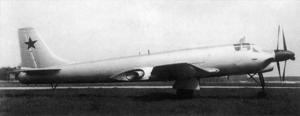
The Tupolev Tu-91 was a two-seat Soviet attack aircraft built during the 1950s. It was initially designed as a carrier-borne aircraft, but was converted into a land-based aircraft after Joseph Stalin's death in 1953 cancelled the aircraft carriers being designed. Two prototypes had been built and production had been approved by the Soviet Navy when it was inspected by the General Secretary, Nikita Khrushchev, in 1956. He remarked how ridiculous the Tu-91 looked and the program was cancelled.

The Yakovlev Yak-16 was a Soviet light transport that first flew in 1947. Prototypes were built in both passenger and military cargo versions, but neither was put into production as the Antonov An-2 was felt to be more versatile.
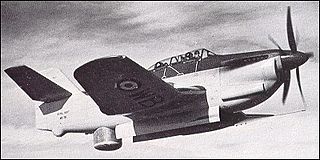
The Blackburn B-54 and B-88 were prototype carrier-borne anti-submarine warfare aircraft of the immediate post-Second World War era developed for the Royal Navy's Fleet Air Arm (FAA). They shared a conventional monoplane design with a mid-mounted inverted-gull wing and tricycle undercarriage. The pilot and observer sat in tandem under a long canopy atop the fuselage. The B-54 had a piston engine while the B-88 had a gas turbine driving large contra-rotating propellers. The radar scanner was mounted in a retractable radome in the rear fuselage, behind a long internal weapons bay. The program was cancelled in favour of the Fairey Gannet aircraft.
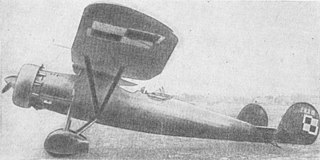
The PWS-19 was a Polish reconnaissance and bomber plane prototype of the 1930s, constructed in the PWS.

The Short Sturgeon was a planned British carrier-borne reconnaissance bomber whose development began during Second World War with the S.6/43 requirement for a high-performance torpedo bomber, which was later refined into the S.11/43 requirement which was won by the Sturgeon. With the end of the war in the Pacific production of the aircraft carriers from which the Sturgeon was intended to operate was suspended and the original reconnaissance bomber specification was cancelled.

The Morane-Borel monoplane was an early French single-engine, single-seat aircraft. It was flown in several European air races.

The Borel Hydro-monoplane was a French seaplane produced in 1912.
The Farman F.120 were a family of multi-engine monoplane aircraft designed and produced by the French aircraft manufacturer Farman Aviation Works. It was operated in a diverse range of purposes, including as a commercial airliner and as a military bomber aircraft.

The Heinkel HE 5, produced in Sweden as the Svenska S 5 and nicknamed the "Hansa", was a reconnaissance floatplane built during the 1920s. It was a further development of the HE 1, sharing its same basic configuration as a low-wing, strut-braced monoplane. The HE designation also refers to the monoplane construction, standing for Heinkel Eindecker.

The Potez 32 and its military version the Potez 33 was a single-engine monoplane transport design and built by the French aircraft manufacturer Potez. It was the first French-built medium-sized aircraft to see active use by both domestic and foreign airlines.

The Mitsubishi Army Type 92 Reconnaissance Aircraft (九二式偵察機) was a Japanese short-range reconnaissance aircraft of the 1930s designed by Mitsubishi for the Imperial Japanese Army Air Force. A total of 230 were built, serving between 1933 and 1936. A parasol monoplane, the Type 92 was the first military aircraft powered by an engine both designed and manufactured in Japan to enter service.
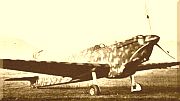
The Caproni Ca.335 Maestrale (Mistral) was an Italian single-engined two-seat fighter-bomber/reconnaissance aircraft of the 1930s.

The Convair Model 48 Charger was a prototype light attack and observation aircraft of the 1960s, developed to meet a requirement for a dedicated counter-insurgency (COIN) aircraft. It was a two-seat, twin-boom aircraft powered by two turboprop engines which lost out to the North American Rockwell OV-10 Bronco of similar layout. Only the single prototype Model 48 was built, and this turned out to be the last complete aircraft constructed by Convair.
The Dewoitine HD.730 was a prototype French reconnaissance floatplane of the 1940s. It was a single-engined, low-wing monoplane that was designed as a catapult-launched reconnaissance aircraft to operate from warships of the French Navy. Two flew in 1940, and a third aircraft was built to a modified design in 1941, but no production followed.

The Cody IV monoplane was a single-engined monoplane designed and built by the American-born but British-based aviation pioneer Samuel Franklin Cody in 1912. It was intended for entry into the 1912 British Military Aeroplane Competition, but was wrecked in a crash before the start of the competition.
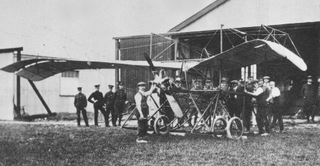
The Dunne D.7 was one of J. W. Dunne's swept wing tailless aircraft designed to have automatic stability, first flying in 1911. It was a single seat, single engined pusher monoplane developed from the unsuccessful D.6.
The Hamburger Flugzeugbau Ha 136 was an all-metal, single-seat training monoplane. It was the first design for the company by Dr. Richard Vogt and the first to feature his trademark tubular steel wing spar which doubled as the main fuel tank. Two prototypes were built but it was not ordered into production.
The Caudron C.580 was a French advanced trainer aircraft intended to prepare pilots for the new low wing monoplane fighters of the mid-1930s. It did not go into production and only two were built.
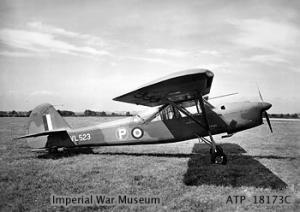
The Auster A.2/45 was a British late 1940s single-engined high-wing air observation monoplane built by Auster Aircraft Limited at Rearsby, Leicestershire. It was designed and built to meet Air Ministry Specification A.2/45 for an "air observation post" (AOP) for the British Army, the requirement was withdrawn and only two prototypes were built.

The Morane-Borel military monoplane was an unsuccessful French single-engine, multi-seat prototype aircraft built in 1911 for the Reims Military Aviation Competition hosted by the French Army. The aircraft only met one of the requirements and was eliminated from the competition.

















